Yesterday we did our first dive out of the Tomato. There were three strikes against the Tomato dive. The biggest one was the five-foot drop down to the icy water. The Tomato sits higher up on the ice than the dive huts and it was a big drop down. The second strike was that the heater didn’t work so it was ambient Antarctic temperature – really cold! The third strike was that Bob and Marcus were simultaneously running the VideoRay down the same hole so there were two extra cables (power cable and transducer cable) for the divers to try not to get tangled in.
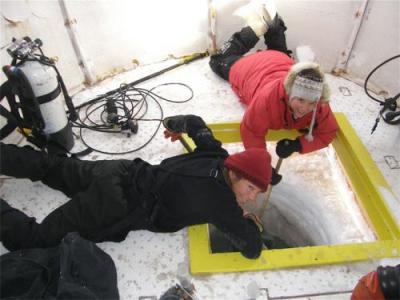
Liz and I are scooping ice out off the top layer of water
Liz and I had to be on our bellies to reach the water, and then have to get on our knees to dump the ice out of our nets into a bucket. Then we haul the bucket of ice outside. It takes about 30 minutes to get most of the ice out of the dive hole.
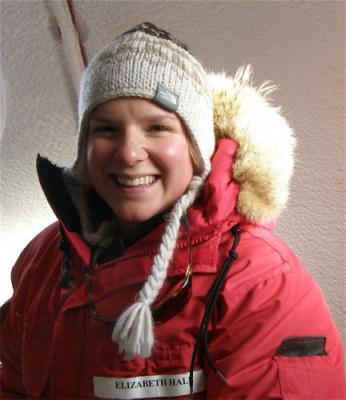
Liz was our awesome dive tender today. She works in the galley and she likes taking hikes around McMurdo in her free time.
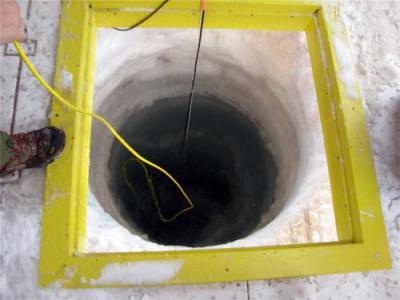
The long drop to the icy water, with two cables to avoid!
Earlier I had asked Stacy why she studied benthic invertebrates in Antarctica instead of someplace warm and wonderful like a coral reef. She said she wanted to study a simple ecosystem. I am completely in awe of the logistics of diving under sea ice, even when a dive goes fairly smoothly. I told Stacy I think it would be easier to study a more complex system in a simpler place to dive! But Stacy doesn’t necessarily want the easy life! She’s a truly dedicated scientist and is unraveling some of the mysteries of these sea floor communities.
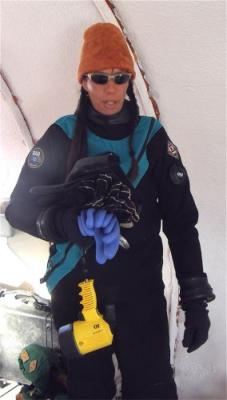
Stacy is looking chilled before she even gets in the water
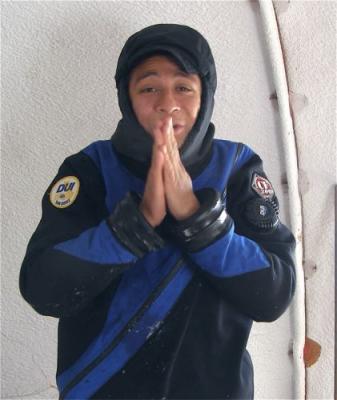
Nick is trying to warm up his hands before his dive
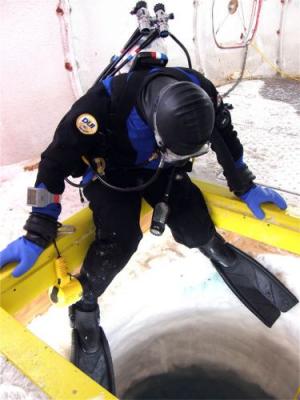
Nick on the edge of the hole - thinking about the long jump!
The divers also thinks over the dive plan before getting in the water. It turns out Stacy did get a little tangled in the VideoRay cable when she got to the bottom of the dive hole. But she has enough sense and enough experience not to panic. She knew Nick was coming to help her once the dive hole was clear of her bubbles. Meanwhile her regulator started to free-flow. This is when air from the tank comes out of the regulator and can drain the tank quickly. Stacy held her breath until the free-flow stopped and then resumed breathing gently. One of the biggest dangers of diving in Antarctica is free-flows from the regulators getting ice crystals in them. All the divers where two regulators, but if a free-flow happens that can't be stopped quickly, they must abort the dive and ascend for safety.
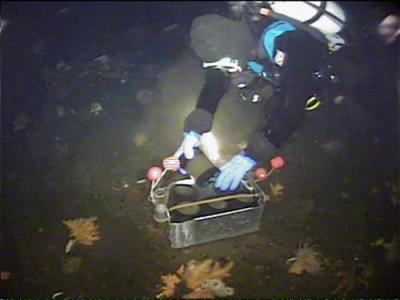
Stacy sampling her benthic invertebrates (Photo by VideoRay)
Stacy has a tray of sampling bottles and she collects the top 10 cm of the seafloor in six locations. She later prepared the samples like I wrote about in the October 11th journal entry.
The advantage of having VideoRay diving with Nick and Stacy is we could get pictures of them working. And look at this next amazing photo...
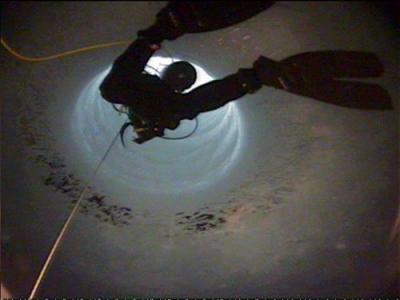
Stacy swimming back up the dive hole at the end of the dive (Photo by VideoRay)
Rob Robbins, the dive supervisor at McMurdo, was interviewed for this month’s (October 2007) Scuba Diving magazine. Here is what he said: "People ask me, where’s the best diving I’ve ever done? Truk Lagoon? The Red Sea? I always tell them McMurdo. I love the stark contrast. Above the ice there is nothing alive, it’s just blue and white. But you drop through that hole and suddenly the world opens up in vibrant, lush colors – deep red starfish, pink soft coral. There’s no place like it in the world.”
So maybe that is why Stacy comes back year after year to dive at McMurdo!

